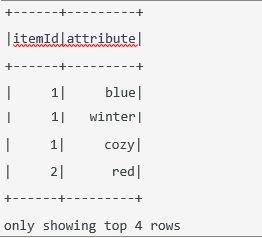Manually persisting RDDs in Spark prevents them from being garbage collected.
This statement is incorrect, and thus the correct answer to the question. Spark's garbage collector will remove even persisted objects, albeit in an "LRU" fashion. LRU stands for least recently used.
So, during a garbage collection run, the objects that were used the longest time ago will be garbage collected first.
See the linked StackOverflow post below for more information.
Serialized caching is a strategy to increase the performance of garbage collection.
This statement is correct. The more Java objects Spark needs to collect during garbage collection, the longer it takes. Storing a collection of many Java objects, such as a DataFrame with a
complex schema, through serialization as a single byte array thus increases performance. This means that garbage collection takes less time on a serialized DataFrame than an unserialized
DataFrame.
Optimizing garbage collection performance in Spark may limit caching ability.
This statement is correct. A full garbage collection run slows down a Spark application. When taking about "tuning" garbage collection, we mean reducing the amount or duration of these slowdowns.
A full garbage collection run is triggered when the Old generation of the Java heap space is almost full. (If you are unfamiliar with this concept, check out the link to the Garbage Collection Tuning docs below.) Thus, one measure to avoid triggering a garbage collection run is to prevent the Old generation share of the heap space to be almost full.
To achieve this, one may decrease its size. Objects with sizes greater than the Old generation space will then be discarded instead of cached (stored) in the space and helping it to be "almost full".
This will decrease the number of full garbage collection runs, increasing overall performance.
Inevitably, however, objects will need to be recomputed when they are needed. So, this mechanism only works when a Spark application needs to reuse cached data as little as possible.
Garbage collection information can be accessed in the Spark UI's stage detail view.
This statement is correct. The task table in the Spark UI's stage detail view has a "GC Time" column, indicating the garbage collection time needed per task.
In Spark, using the G1 garbage collector is an alternative to using the default Parallel garbage collector.
This statement is correct. The G1 garbage collector, also known as garbage first garbage collector, is an alternative to the default Parallel garbage collector.
While the default Parallel garbage collector divides the heap into a few static regions, the G1 garbage collector divides the heap into many small regions that are created dynamically. The G1
garbage collector has certain advantages over the Parallel garbage collector which improve performance particularly for Spark workloads that require high throughput and low latency.
The G1 garbage collector is not enabled by default, and you need to explicitly pass an argument to Spark to enable it. For more information about the two garbage collectors, check out the
Databricks article linked below.





 C:\Users\Admin\Desktop\Data\Odt data\Untitled.jpg
C:\Users\Admin\Desktop\Data\Odt data\Untitled.jpg
